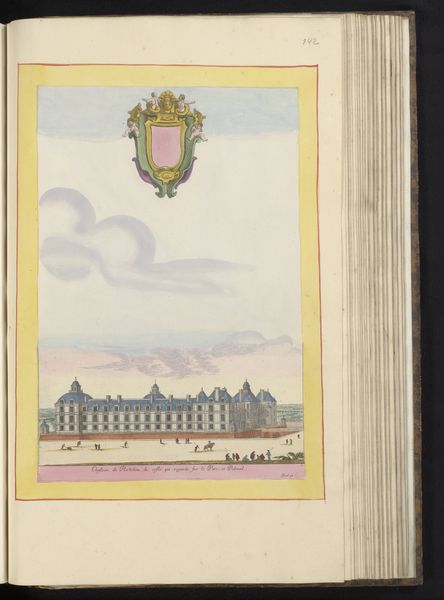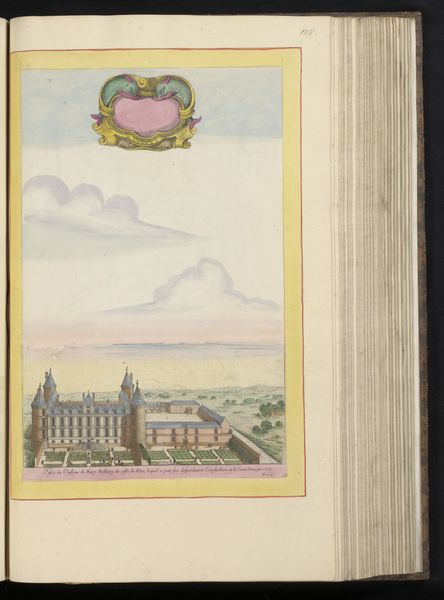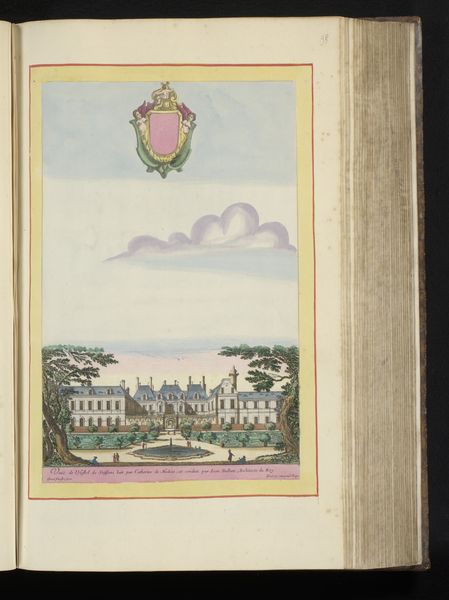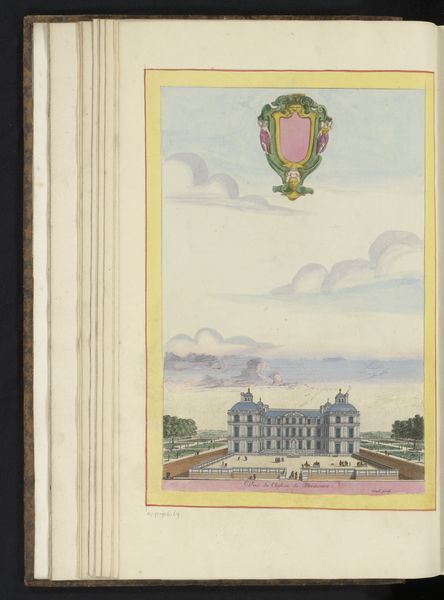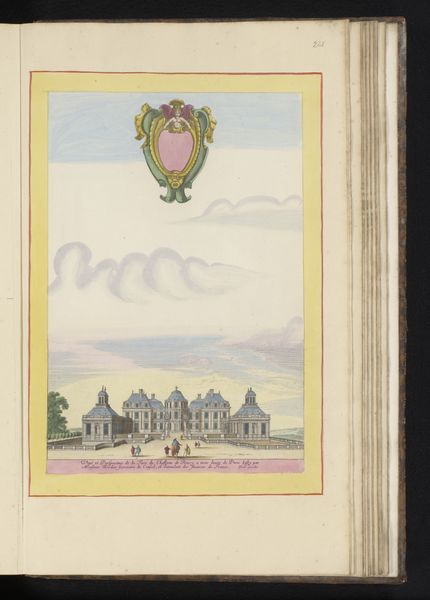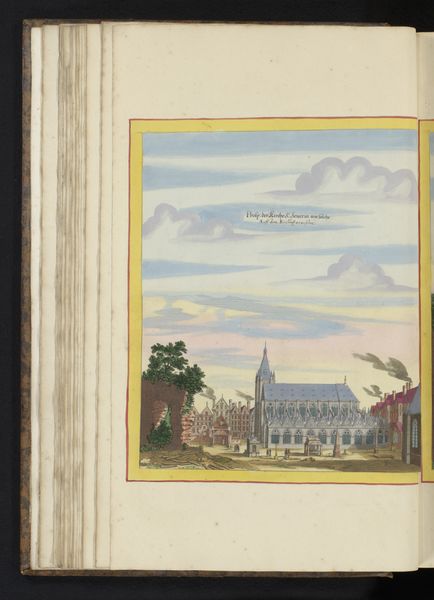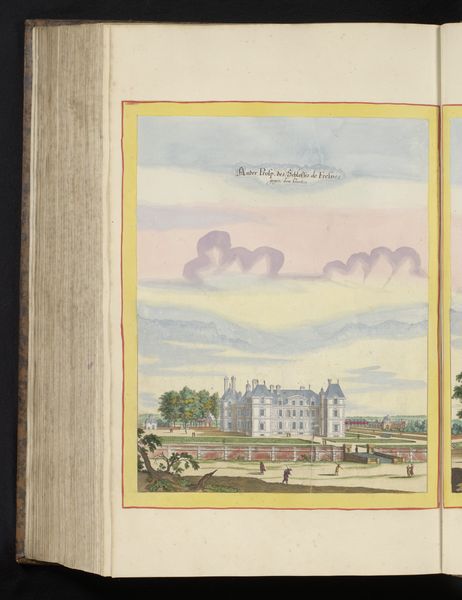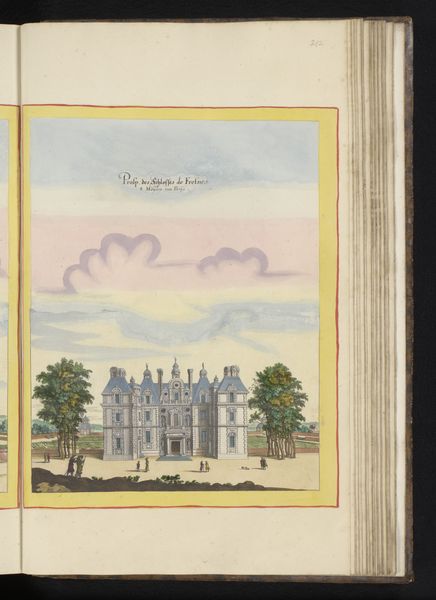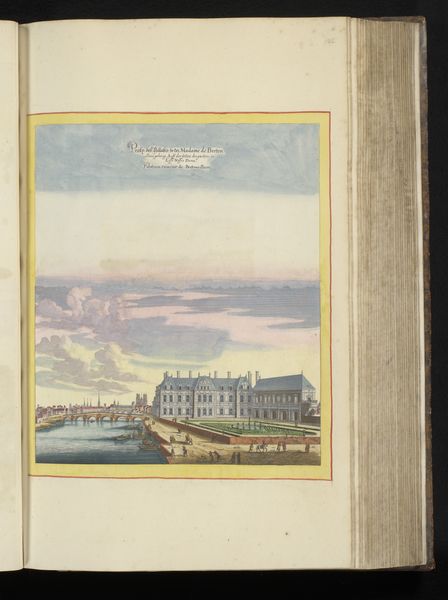
drawing, paper, watercolor
#
drawing
#
baroque
#
landscape
#
paper
#
watercolor
#
coloured pencil
#
cityscape
#
watercolour illustration
#
watercolor
Dimensions: height 373 mm, width 249 mm, height 532 mm, width 320 mm
Copyright: Rijks Museum: Open Domain
Curator: Let’s discuss this watercolor on paper by Israel Silvestre, “View of the Chateau de Richelieu,” created around 1649. Editor: It's striking! The delicate washes create an ethereal atmosphere, almost dreamlike. The symmetry is pleasing, and the muted color palette really draws you in. Curator: Absolutely. Silvestre's background significantly shapes his art. He was a draughtsman and printmaker working for the French court, which explains the subject: Cardinal Richelieu's impressive Chateau. These images served a propagandistic role, showcasing royal power and the wealth it commanded through materials and artistry. Editor: Propaganda through watercolors? Interesting! You almost don't notice it beneath the charming depiction. I'm curious, what sort of paper would have been available and considered appropriate at the time for such a presentation piece? Were these works bound into albums? And how accessible would such images of power be to the general population? Curator: High-quality laid paper was common, allowing for fine detail and color absorption. Indeed, similar works were collected into albums for wealthy patrons. Though not for the masses, these images did circulate amongst the elite, solidifying Richelieu’s image. We also have to consider the labour that went into this. Preparing pigments, applying the paint – each step a testament to the skilled labour underwritten by Richelieu’s wealth and political influence. Editor: Right, that connection between wealth, labor, and the image produced is central to its impact. It subtly underscores a social order and who benefited most from it. Do we know what kind of viewership these kinds of illustrations would have had? And where they were intended to be kept? Curator: Initially, such imagery reinforced power within the court circle. Displayed in private collections or gifted to other aristocrats, it sustained a visual culture reinforcing the established social order. Editor: Considering how architecture still reflects and perpetuates societal hierarchies, it is interesting to view Silvestre’s drawing as a contribution to such image production. Curator: Exactly. His piece, so delicate in appearance, served a substantial purpose in building and maintaining social and political ideologies. Editor: Well, I certainly see more in this watercolor now than just a pretty castle! Curator: Me too. It's always amazing how close examination unveils the deeper societal values embedded within artistic practice and intent.
Comments
No comments
Be the first to comment and join the conversation on the ultimate creative platform.
